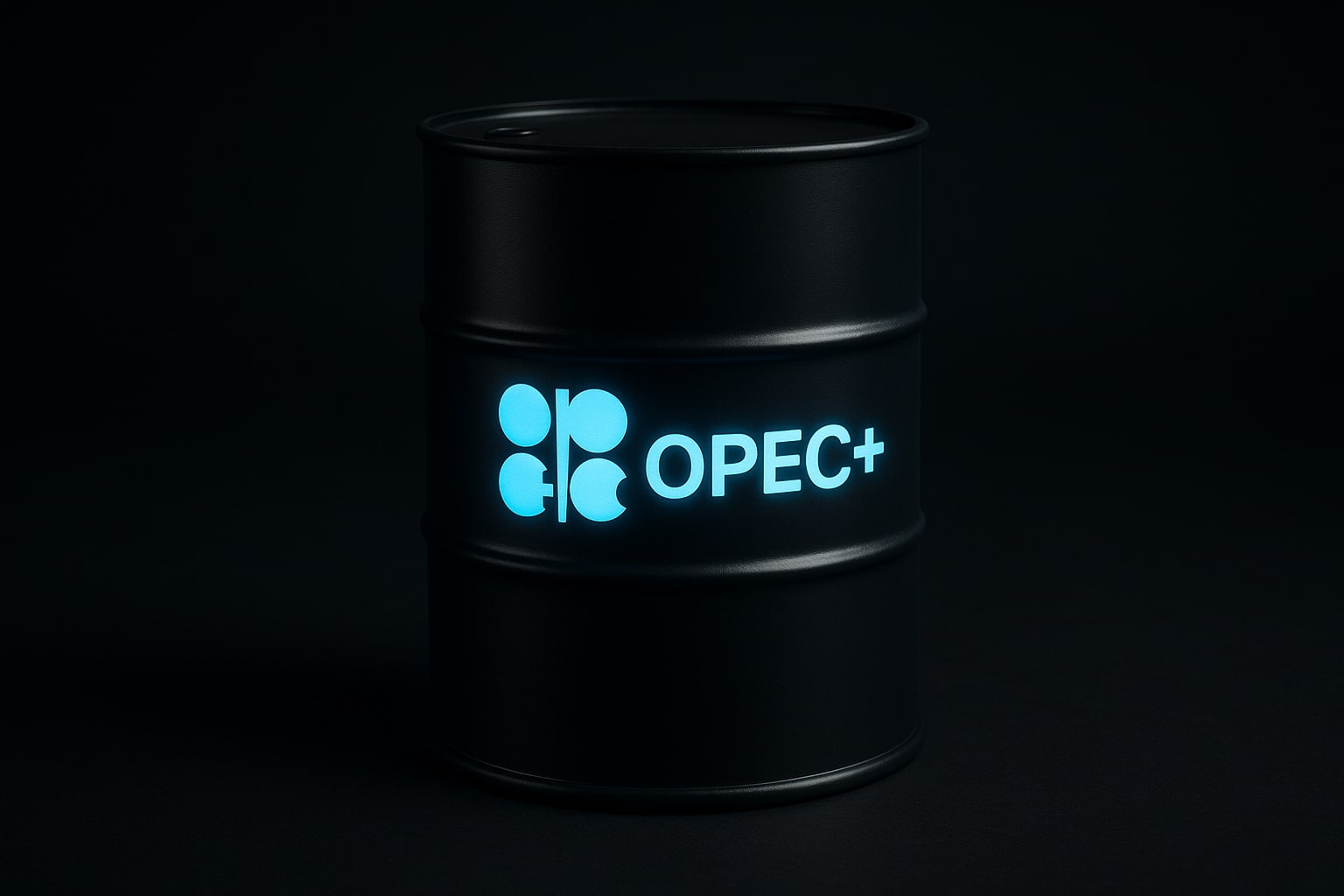
Oil Prices Steady as OPEC+ Supply Cuts Support Market
WTI holds $74.90, Brent $78.25 with traders eyeing OPEC+ policy, U.S. inventories, and key breakout levels | That's TradingNEWS
WTI and Brent Prices Hold Firm Ahead of OPEC+ Meeting
WTI crude (CL=F) trades near $74.90, while Brent (BZ=F) is holding around $78.25 as markets await the upcoming OPEC+ meeting that could set the tone for supply in the remainder of Q3. Traders are balancing Middle East tensions, U.S. demand resilience, and signs of tightening supply against macroeconomic headwinds from global growth forecasts.
Support and Resistance Levels for WTI and Brent
For WTI, immediate support is at $73.60, with deeper protection near $72.00. Resistance remains in the $75.50–$76.20 range, followed by a breakout trigger at $77.80. In Brent, support sits at $77.00, with key resistance at $78.90–$79.50; a close above $80.00 could open upside toward $82.20.
OPEC+ Policy Outlook and Production Strategy
Analysts expect OPEC+ to maintain its voluntary production cuts of 2.2 million bpd into September, with Saudi Arabia keeping its 1 million bpd unilateral cut in place. Russia’s oil exports remain capped due to sanctions and shipping restrictions, which continues to underpin prices despite moderate demand growth.
U.S. Supply and Inventory Trends
EIA data shows U.S. crude inventories fell by 4.1 million barrels last week, marking the fourth consecutive drawdown. Gasoline stocks declined by 1.7 million barrels, and refinery utilization rates increased to 94.2%, signaling strong summer demand. U.S. production is steady at 13.2 million bpd, but export demand remains robust, with shipments topping 4.4 million bpd.
Geopolitical Tensions and Market Risk Premium
Middle East instability is still adding a modest risk premium to oil prices. Attacks on Red Sea shipping routes have rerouted tanker flows, adding costs and extending delivery times. Meanwhile, Nigeria’s production recovery remains fragile amid ongoing pipeline sabotage, keeping African output below OPEC’s target.
Macro Factors Influencing Oil Demand
The global economic backdrop is mixed: China’s July manufacturing PMI improved to 50.4, pointing to mild industrial expansion, while the Eurozone’s composite PMI contracted to 48.9, reflecting weaker demand. In the U.S., the ISM Services Index eased to 50.1, keeping the Fed on track for a possible September rate cut, which could indirectly support energy consumption through looser financial conditions.
Technical Outlook for WTI and Brent
WTI’s momentum is neutral-to-bullish above $73.60, with RSI readings in the mid-50s signaling room for further upside. Brent remains in a tight consolidation above $77.00; a daily close over $80.00 would confirm a breakout pattern targeting $82.20–$83.50. Any failure below $73.00 in WTI or $77.00 in Brent would shift the short-term bias to bearish.
Trading Playbook for Crude Oil
Swing traders can accumulate WTI on dips to $73.80–$74.20 with a stop under $72.80, targeting $76.20 and $77.80. Brent longs should look for entries between $77.20–$77.60, with stops under $76.60, aiming for $79.50 and $82.20. Macro traders should stay alert for OPEC+ headlines and weekly U.S. inventory data as key volatility triggers.
Verdict on Oil Prices
Rating: Buy on Dips. With OPEC+ output discipline, steady U.S. demand, and geopolitical risks still embedded, WTI has potential to retest $77.80 and Brent could reclaim $82.20 in the coming weeks. A confirmed breakout above those levels would shift the medium-term bias to bullish, while a failure below $73.00 in WTI or $77.00 in Brent would warrant moving to a hold stance.
That's TradingNEWS
Read More
-
SCHD ETF Price at $27: Can SCHD’s 4% Yield and 9.15% Dividend Growth Beat High-Yield Covered Call ETFs?
15.12.2025 · TradingNEWS ArchiveStocks
-
XRP ETFs Close on $1B Inflows as XRPI at $10.92 and XRPR at $15.52 Hit 52-Week Lows
15.12.2025 · TradingNEWS ArchiveCrypto
-
Natural Gas Price Forecast: NG=F Holds the $4 Floor as Oversupply Clashes with 2026 LNG Demand
15.12.2025 · TradingNEWS ArchiveCommodities
-
USD/JPY Price Forecast - Dollar to Yen At 155: Yen Strength Builds As BoJ Hike And NFP Collide
15.12.2025 · TradingNEWS ArchiveForex



















